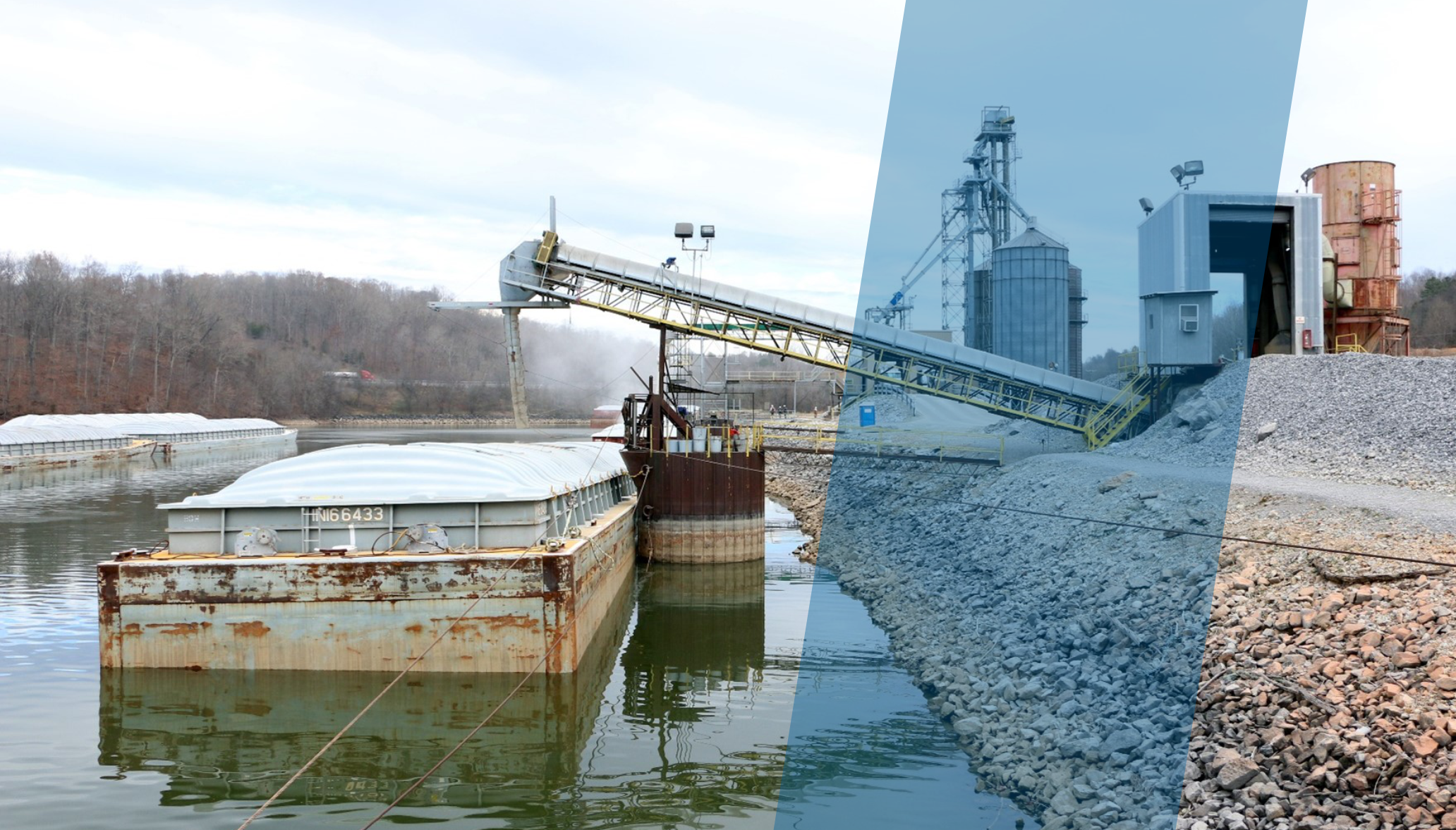If it’s not broken, don’t fix it. This philosophy rings true for the power, convenience, and reliability of major rivers. From the ancient Indigenous populations of the Kentucky region to contemporary freight transport companies, the power of these rivers has never been taken for granted. Today, we use riverports to move goods via barges and vessels, evolving from canoes and riverboats.
BFW/Marcum are as invested in river transportation as they are in highway interstates. Whether designing roads and interchanges or conceptualizing ports that connect major waterways, we are committed to improving and expanding infrastructure.
Why Use Rivers?
In the age of planes, trains, and automobiles, rivers might seem outdated, but water transportation remains one of the most cost-effective and powerful ways to move goods. Kentucky’s proximity to major rivers gives it a unique advantage. Kenny McDaniel, Civil Engineer/Project Manager, explains:
“Riverports are important because they efficiently transport large quantities of material off roads and rail to inland waterways for transport to destinations within the states, coastal ports, and worldwide. One barge can hold the equivalent tonnage of 58 truckloads or 13 railcar loads. A common tow on the river is up to 15 barges, equivalent to 870 trucks or 195 rail cars.”
Kentucky Is Well-Situated for the Task
Riverports require wide, powerful, and conveniently located rivers. Kentucky benefits from the Ohio River to its north and the Mississippi River to its west. Maegan Mansfield, Civil Engineer/Project Manager, elaborates:
“Kentucky’s rivers connect the Northeast to the Midwest and beyond, creating opportunities for growth and expansion. River transportation is cost-effective, efficient, clean, and safe. Kentucky is uniquely positioned with access to inland waterways through multiple channels including the Ohio River, Mississippi River, Tennessee River, Cumberland River, and more. There are several riverports that serve as hubs for the industry providing storage and transport of agricultural commodities, cargo, and bulk materials.”
Industries Evolve, So Do Logistics
Each riverport facility must fit its unique location. As industries and logistics evolve, so do riverports. Maegan highlights BFW/Marcum’s role:
“BFW/Marcum has longstanding experience with riverports from strategic planning to engineering. We offer services including grant application writing, master plan development, engineering, and construction administration. We support riverports from inception to completion, often acting as the technical arm, creating visions for growth, and maintaining infrastructure.”
Challenges are inherent in the environment. discusses typical civil engineering issues:
“Designing ports involves variable soil conditions, water level fluctuations, and environmental clearance. Soil characteristics are unique due to alluvial deposits, affecting stability. Water surface elevations can fluctuate over 55 feet, complicating structure and equipment design. Environmental permits and clearance/mitigation are also crucial.”
Building a Riverport is a Team Effort
Creating a riverport requires diverse expertise. Kenny explains BFW/Marcum’s comprehensive approach:
“With BFW’s extensive in-house capabilities, we handle planning, funding, survey, geotechnical, structural, civil, environmental, and testing. We consult with equipment manufacturers and specialty companies like Ann L. Schneider & Associates and The Beckett Group for funding and transportation trends.”
Ann Schneider appreciates the collaboration:
“BFW/Marcum brings strong engineering and environmental expertise, crucial for developing riverport boundaries, investments, and phasing development to maximize transportation capacity. Their comprehensive approach ensures efficient and productive supply chains.”
Riverports Are Like a City
Ann draws a parallel:
“Riverports are like cities, with utilities, infrastructure, buildings, and commerce. Staff are essential for operation and management, governed by boards appointed by elected officials. Strategic plans, research, and future needs are approached holistically.”
The collaboration with Ann began with a grant application for McCracken County Paducah Riverport and grew into developing master plans and strategic data analysis for riverports.
A Confluence of Ingenuity
Maegan reflects on the personal connection to riverports:
“I grew up in Paducah, near the confluence of the Ohio and Tennessee Rivers. Watching barges and trains was a pastime, and now I realize the importance of this industry. Riverports are vital to our economy, reducing road volume, storing goods, and enabling production.”
The great American rivers inspire us to create something larger than life, a confluence of nature and engineering, standing the test of time as powerful symbols of human ingenuity.


Recent Comments